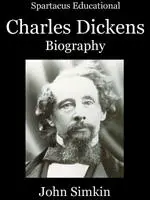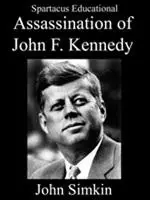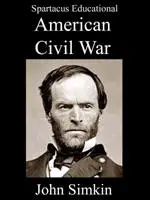Spartacus Educational E-Books
John Foxe provides a very positive picture of Anne Boleyn in his Book of Martyrs (1563): “Many things might be written more of the manifold virtues, and the quiet moderation of her mild nature… Also, how bountiful she was to the poor, passing not only the common example of other queens, but also the revenues almost of her estate; insomuch that the alms which she gave in three quarters of a year, in distribution, is summed to the number of fourteen or fifteen thousand pounds." Foxe then goes on to argue that Boleyn used her influence to get Protestant reformers, Hugh Latimer and Nicholas Shaxton, placed in important positions in the Church hierarchy. However, after the death of Elizabeth, her mother’s reputation went into decline. Catholic nations in Europe encouraged this negative view of Anne Boleyn. In this book the author has attempted to capture the life of a woman who suffered because she tried to influence the religious and political life of Tudor England. The book includes source-based activities to help the student with their GCSE and 'A' level examinations.
1 873598 63 7
Price £0.99 - $1.50
Henry VIII is perhaps the most formidable and famous King who has ever reigned in England. He was admired, feared and hated during his lifetime. His enemies described him as a greedy tyrant who suppressed the monasteries and seized their wealth for himself. Henry put to death the Carthusian monks and Catholics such as Sir Thomas More and Bishop John Fisher but also burned 84 Protestant martyrs during his reign. Henry’s supporters point out that he was an accomplished musician, a patron of the arts, and a fine athlete in his youth. He was also one of the main builders of the English navy and made a great power. However, others would describe him as a bloated old despot with a waist-measurement of 54 inches who treated his six wives very badly. The book includes source-based activities to help the student with their GCSE and 'A' level examinations.
1 873598 58 0
Price £0.99 - $1.50
Henry VII was crowned on the battlefield at Bosworth with Richard III’s crown. He inherited a kingdom that was smaller than it had been for over 400 years. For the first time since the 11th century the realm did not include one French province. He held the title of "Lord of Ireland" but effectively governed only an area that was roughly a semi-circle forty miles deep around Dublin. By the time he died Henry’s VII’s personal fortune of over £1.5 million reflected the commercial prosperity his prudent policy had restored to the country. He had left a peaceful and united realm and had helped to end fifteenth-century instability in government. The book includes source-based activities to help the student with their GCSE and 'A' level examinations.
1 873598 48 3
Price £0.99 - $1.50
Mary I was crowned the first Queen of England in October, 1553. During her three year reign 227 men and 56 women were burnt for heresy. This compare to only 81 heretics executed during the reign of Henry VIII (1509-1547). Mary's cruelty resulted in her being called "Bloody Mary". John Foxe, one of the first historians to write about Mary, claimed that she was an example of what could happen when "a lawful ruler was seduced by the Devil". For the next five hundred years historians have not been very kind to our first queen. Jasper Ridley, wrote in Bloody Mary's Martyrs (2002) that because of Mary's actions "it is impossible for a King or Queen of England to be a Roman Catholic or to marry a Roman Catholic; and Bloody Mary is indirectly responsible for the hatred of 'Papists' felt by the Protestants in Northern Ireland today". In this brief biography an attempt has been made to explain the psychological reasons for her behaviour. The book includes source-based activities to help the student with their GCSE and 'A' level examinations.
1 873598 63 7
Price £0.99 - $1.50
Available as an eBook from Amazon UK
Available as an eBook from Amazon USA
Available as an ePub file from Gumroad
This comprehensive encyclopaedia of the First World War has over 800 entries. It includes sections the Outbreak of War, Armed Forces, Important Battles, Technology, Political Leaders, Home Front, Military Leaders, Life in the Trenches, Trench System, Trench War, Soldiers, War Heroes, War Medals, War at Sea, War in the Air, Pilots, Aircraft, War Artists, Cartoonists and Illustrators, War Poets, Journalists, Newspapers and Journals, Novelists and the War, Women at War, Women's Organisations, Weapons & War Machines, Inventors and the War, Theatres of War and War Statistics.
1 873598 08 4
Price £4.95 - $7.98
ISBN 1 873598 03 3
Available as an eBook from Amazon UK
Available as an eBook from Amazon USA
Available as an ePub file from Gumroad
In September 1860 Dickens burnt thousands of letters on a bonfire at his home at Gad's Hill Place in Kent. He also wrote to friends asking them to destroy any letters that they had received from him. We know that Dickens had always kept secrets from his friends and relatives. When he was a child his father was arrested for debt and sent to the Marshalsea Prison in Southwark. Yet during his lifetime he only told two people about this event. The same is true of his experiences working in the Warren 's Blacking Factory. Dickens admitted he had fears about what biographers would say about him in the books written after his death. Why was Dickens so ashamed about these events and what influence did it have on his work? This biography attempts to answer these questions. It also includes a large collection of primary sources so that the reader can make up their own mind about this deeply flawed genius.
Price: £2.95 - $4.75
-
This comprehensive encyclopaedia of the assassination of President John F. Kennedy has over 700 entries. This includes biographies of 668 people involved in the case. The encyclopaedia also looks at the possibility that different organizations such as the Mafia, CIA, FBI, Secret Service, KGB and the John Birch Society might have been involved in the planning of the assassination. Other possibilities such as anti-Castro activists, Texas oil millionaires and the Warren Commission's lone-gunman theory are also looked at. The book contains 2,633,711 words (approximately 6,500 pages).
Available as an eBook from Amazon UK
Available as an eBook from Amazon USA
Available as an ePub file from Gumroad
-
ISBN 1 873598 28 9
Available as an eBook from Amazon UK
Available as an eBook from Amazon USA
Available as an ePub file from Gumroad
Since his assassination in 1947, Gandhi has become one of the most loved and respected political leaders of all time. Louis Fischer, one of his biographers, claims that he is the greatest figure to emerge since Jesus Christ. The scientist, Albert Einstein, who was not known to exaggerate and had a considerable reputation for seeking the truth, commented after Gandhi's death: "Generations to come, it may be, will scarce believe that such a one as this ever in flesh and blood walked this earth." The main reason why Gandhi is so highly respected is that he was a man of peace. The 20th Century has been an extremely destructive period in world history and Gandhi was one of the few leaders of the dispossessed to have constantly advocated the use of non-violent action to solve political problems. However, some critics have claimed that he was a man who had failed to come to terms with the modern world. Others would argue that the world's only hope for survival is to adopt Gandhi's belief that only love can conquer violence. Whatever your final judgement may be, I hope you agree that his actions as well as his opinions are well worth considering.
Price: £2.94 - $4.63
-
American Civil War Encyclopaedia
ISBN 1 873598 18 1
Available as an eBook from Amazon UK
Available as an eBook from Amazon USA
Available as an ePub file from Gumroad
On 12th April, 1861, General Pierre T. Beauregard demanded that Major Robert Anderson surrender Fort Sumter in Charleston harbour. Anderson replied that he would be willing to leave the fort in two days when his supplies were exhausted. Beauregard rejected this offer and ordered his Confederate troops to open fire. After 34 hours of bombardment the fort was severely damaged and Anderson was forced to surrender. This event was the start of a civil war that was to last for four years. This comprehensive encyclopaedia of the American Civil War has over 290 entries, including sections on Battles (18), Political Figures (62), Military Leaders (78), Organizations, Events and Issues (22), Soldiers (42), Women and the War (18), Writers, Artists and Photographers (20), and Assassination of Abraham Lincoln (34).
Price: £3.97 - $6.23
-
Spanish Civil Wa Encyclopaedia
ISBN 1 873598 18 1
Available as an eBook from Amazon UK
Available as an eBook from Amazon USA
Available as an ePub file from Gumroad
Available information suggests that there were about 500,000 deaths from all causes during the Spanish Civil War. An estimated 200,000 died from combat-related causes. Of these, 110,000 fought for the Republicans and 90,000 for the Nationalists. This implies that 10 per cent of all soldiers who fought in the war were killed. It has been calculated that the Nationalist Army executed 75,000 people in the war whereas the Republican Army accounted for 55,000. Around 10,000 Spanish people were also killed in bombing raids. The vast majority of these were victims of the German Condor Legion. It is estimated that about 5,300 foreign soldiers died while fighting for the Nationalists (4,000 Italians, 300 Germans, 1,000 others). The International Brigades also suffered heavy losses during the war. Approximately 4,900 soldiers died fighting for the Republicans (2,000 Germans, 1,000 French, 900 Americans, 500 British and 500 others). The economic blockade of Republican controlled areas caused malnutrition in the civilian population. It is believed that this caused the deaths of around 25,000 people. All told, about 3.3 per cent of the Spanish population died during the war with another 7.5 per cent being injured. This book attempts to capture the tragic nature of these events.
Price: £3.97 - $6.23







